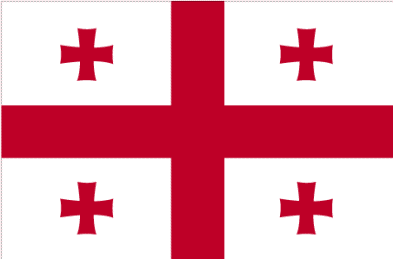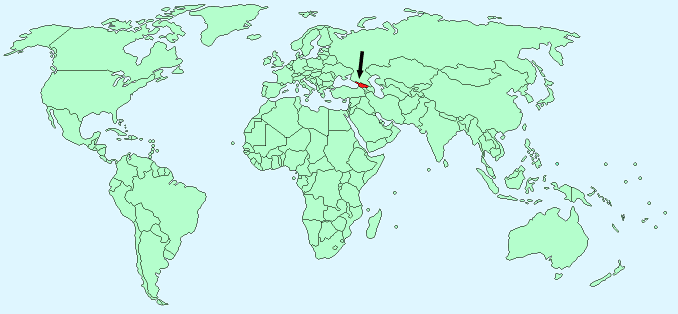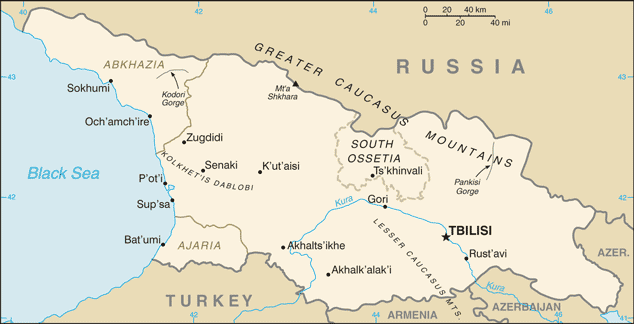Georgia


Continent – Asia
Region – South-West Asia
Size – 69,700 km²
Geography – mostly mountains, low coastal area
Language – Georgian, Russian, Armenian, Azeri
Religion – 84% Christian, 10% Muslim, 4% Armenian-Gregorian, 2% other
Monetary Unit – Lari
Natural Resources – forests, hydropower, manganese deposits, iron ore, copper, minor coal and oil deposits
Agriculture – citrus, grapes, tea, hazelnuts, vegetables, livestock
Industry – steel, aircraft, machine tools, electrical appliances, mining (manganese and copper), chemicals, wood products, wine

Neighbouring Countries – Russia, Azerbaijan, Armenia, Turkey
Population – 4,935,880 (2014 estimate)
Population Growth Rate – -0.11%
Average Life Expectancy – 75.72
Capital City – Tbilisi (1,175,200)
Highest Mountain – Shkhara (5,201 m)
Longest River – Kura (1,364 km – total length)
Climate – Mediterranean – cool winters -1°C to 17°C, hot summers 16°C to 31°C
Yearly Rainfall – 50 cm (approx)
Plant Life – black alder, oak, elm, beech, evergreen trees
Animal Life – Mountain goats, Caucasian goats, Caucasian antelope, European wild boar, porcupine, leopard
Harvard Reference for this page:
Heather Y Wheeler. (2015). Georgia. Available: https://www.naturalhistoryonthenet.com/Facts_Figures/Country_Facts/georgia.htm. Last accessed Monday, July 18, 2016
Facts and Figures Pages
